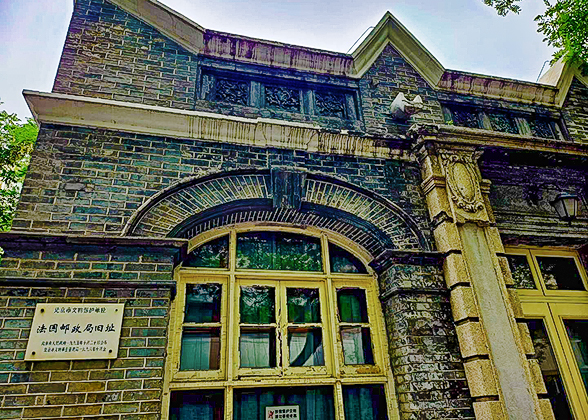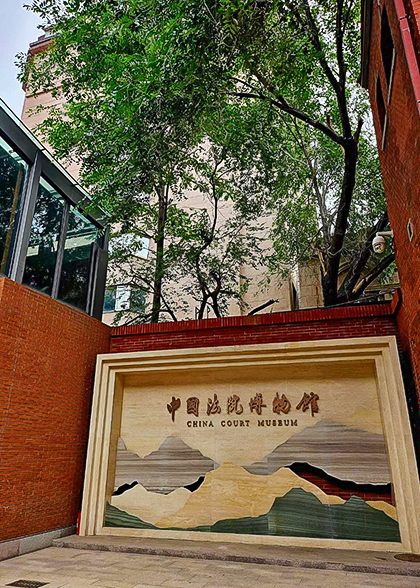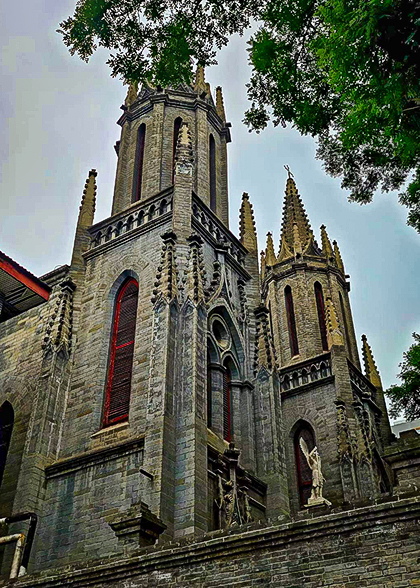Name: Dongjiaomin Lane, East Jiaomin Lane, Dongjiaomin Xiang
Chinese Name: 东交民巷
Length: 3 kilometers (9,843 feet) together with
Xijiaomin LaneLocation: To the east of
Tiananmen SquareDongjiaomin Lane and Xijiaomin Lane used to be called Jiangmi Lane, titled the longest
hutong in Beijing. Stretching east from Tiananmen Square East Road to Chongwenmen Inner Street, Dongjiaomin Lane was focal point of a number of foreign legations from 1861 to 1959, which meant Britain, France, America, Russia, Japan, and Germany. Now, it is a historical and cultural site in Beijing.
Foreign Envoys Reception Before 1860
Dongjiaomin Lane and Xijiaomin Lane were collectively called Jiangmi Lane in the
Yuan Dynasty (1271 – 1368). Customs offices, vital to canal transportation of the day, were built there. Then, it was partitioned into Dongjiangmi and Xijiangmi in the
Ming Dynasty (1368 – 1644). Ministry of Rites, Court of State Ceremonial, and Huitong Hall were installed on Dongjiangmi Lane. The first two were both state offices. Huitong Hall served as the reception of foreign envoys. It was named Siyi Hall and also acted as a translation institution in the
Qing Dynasty (1644 – 1911).
Legation Quarter from 1860 to 1959
After the Second Opium War in 1860, permanent British, French, American, and Russian legations were established on Dongjiangmi Lane. Other countries followed suit, making this hutong the Legation Street. Since then, this hutong was known as Dongjiaomin Lane. When more and more foreigners had settled, a number of foreign banks, French post office, and western hospitals opened shop, making this place a lot westernized.
Legation Quarter was moved to
Sanlitun in 1959. But the buildings in this hutong have attracted numerous visitors.
Former Legation Buildings
The legacy buildings are former legations or headquarters of many western countries and concerns, such as France, Austria-Hungary, Belgium, and Italy, Specie Bank, Citibank, international club, and French barrack. You can see arches and verandas in almost every building. Gates, pilasters, and roof all follow western-style architectural patterns in the early 20th century.
At the joint with Taijichang Street, you can see St. Michael's Church. It is a two-floor Gothic architecture built in 1901, which is dominated by a statue of the Archangel Michael above the gate. It is the smallest Catholic church in town, with an area of 2,656.4 square meters (2,905 square yards). This church's exterior is marble with the interior wood. It has an arched roof supported by round pillars. Walls and windows are of customized stained glass. To the north of the church is a two-story western-style house for the priory.
How to get to Dongjiaomin Lane
By subway
Take
Subway Line 2 to Qianmen Station; or take Line 2/
Line 5 to Chongwenmen.
By bus
1. Take bus 2, 5, 120, or Sightseeing Bus Line 2, and get off at Tiananmen Square East Station.
2. Take bus 41, or 60 to Zhengyilu Nankou Station.
3. Take bus 39, 41, 106, 108, 110, 111, 116, 128 or 684, and get off at Chongwenmen Inner Station.
4. Take bus 8, 9, 20, 41, 44, 59, 60, 103, 104, 110, 599, 622 or Te 2, and get off at Chongwenmen West Station.
Beijing Bus / Subway Search
Attraction around Dongjiaomin Lane:
 Lao She Teahouse
Lao She Teahouse
- Last updated on Aug. 16, 2024 by Gabby Li -


